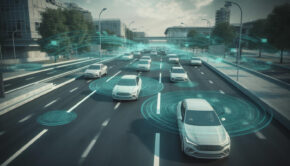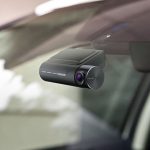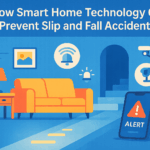How Smart Transportation Systems Can Help Prevent Bus Accidents: The Role of AI and IoT
In recent years, advancements in technology have revolutionized many industries, and transportation is no exception. Smart transportation systems, powered by artificial intelligence (AI) and the Internet of Things (IoT), are transforming how we think about safety on the road. With these innovations, transportation networks can respond to challenges in real-time, reducing risks and improving efficiency. Bus accidents, unfortunately, remain a significant concern. However, the integration of AI and IoT into public transportation systems has the potential to dramatically reduce these incidents. This blog will explore how these technologies are being utilized to prevent bus accidents, ensuring a safer experience for both passengers and drivers.
The rise of connected infrastructure, intelligent systems, and predictive analytics presents an exciting opportunity for cities and transit authorities to improve safety. As buses operate in complex environments, AI and IoT can optimize traffic flow, monitor conditions, and provide alerts when dangerous situations arise. Together, these technologies are paving the way for safer, more efficient public transportation systems.
Understanding Smart Transportation Systems
Smart transportation systems are highly interconnected networks that use advanced technologies to optimize traffic management, vehicle operations, and infrastructure coordination. These systems rely on a combination of real-time data collection, AI-driven decision-making, and IoT-connected devices. Sensors, cameras, and communication tools monitor the environment, allowing systems to adapt and respond dynamically to current conditions.
For bus transportation, smart systems can collect data about bus locations, road conditions, and traffic patterns. According to one law firm, this information helps improve bus route efficiency, reduce delays, and avoid congested areas where accidents are more likely. By leveraging real-time data and predictive analytics, smart transportation systems can enhance bus safety, making it easier for authorities to prevent accidents and address risks proactively.
The Role of AI in Bus Safety
Artificial intelligence plays a pivotal role in smart transportation systems, particularly when it comes to managing traffic and enhancing vehicle safety. AI-powered traffic management systems can analyze vast amounts of real-time data to predict and mitigate accidents. By optimizing traffic lights and adjusting traffic flows based on current conditions, AI reduces congestion and the likelihood of collisions.
Moreover, AI can assist in predictive maintenance, helping to prevent bus accidents caused by mechanical failures. AI systems can analyze data from buses’ sensors to predict when a bus might need servicing, such as detecting abnormal tire wear or engine performance issues. This proactive maintenance ensures buses are running optimally, reducing the risk of accidents due to equipment failure. In the future, autonomous buses, powered by AI, may also be capable of reducing human error, one of the leading causes of accidents.
IoT and Its Impact on Bus Accident Prevention
IoT, the network of interconnected devices that communicate in real time, is essential for monitoring and maintaining safety in smart transportation systems. IoT sensors placed on buses provide continuous feedback on vehicle performance, driver behavior, and environmental factors. For example, IoT-enabled devices can monitor tire pressure, fuel levels, and vehicle speed, alerting maintenance teams to any issues before they escalate into safety risks.
Real-time data from IoT sensors also allows for better communication between the bus and the central transportation network. This enables fleet managers to monitor bus conditions and driver behavior, ensuring that potential hazards such as speeding or unsafe driving patterns are flagged and addressed. Additionally, IoT enables vehicle-to-infrastructure (V2I) communication, where buses can exchange information with traffic lights and road sensors, optimizing the flow of traffic and reducing the likelihood of accidents at intersections.
Case Studies and Real-World Applications
Several cities around the world have successfully integrated AI and IoT technologies into their public transportation systems, demonstrating the potential for these tools to prevent accidents. In cities like Singapore and London, AI-powered systems have been used to manage traffic flow, reduce congestion, and ensure safer bus routes. For example, in Singapore, the city’s smart traffic management system adjusts traffic signals based on real-time data, improving bus efficiency and minimizing delays.
Additionally, IoT-based technologies are already being used by bus fleets in cities like New York and San Francisco. These cities have equipped their buses with IoT sensors that monitor everything from tire pressure to driver fatigue. The data collected from these sensors is transmitted to fleet managers, allowing them to identify potential issues before they lead to accidents. As a result, buses are better maintained, drivers are more accountable, and passengers experience fewer delays and incidents.
Challenges and Future Directions
While the potential for AI and IoT in preventing bus accidents is immense, there are challenges to implementing these technologies on a wide scale. One of the biggest hurdles is the high cost of upgrading transportation infrastructure to accommodate smart systems. Implementing AI-driven traffic management, installing IoT sensors on vehicles, and building the necessary data infrastructure can require significant investment from government bodies or private companies.
Additionally, public acceptance of these technologies can be slow. Many people remain skeptical about autonomous systems and the idea of technology making decisions about safety. Ensuring data privacy and security is another challenge that must be addressed before these systems can be fully deployed. Despite these obstacles, the future of smart transportation looks promising. Continued advancements in AI, IoT, and 5G connectivity will likely drive even greater improvements in bus safety, making it possible for public transportation systems to become safer, more efficient, and more responsive to the needs of passengers.
Conclusion
The integration of AI and IoT into bus transportation systems offers a promising solution for reducing accidents and improving safety. By enhancing traffic management, enabling real-time monitoring, and providing predictive maintenance, these technologies create a more reliable and secure environment for both passengers and drivers. As cities and transit authorities continue to invest in smart transportation infrastructure, we can expect further advancements in the use of AI and IoT to prevent accidents and reduce the risks associated with public transportation.
In the coming years, the continued development of autonomous vehicles, smarter sensors, and real-time data analytics will likely reshape the way we think about transportation safety. As the transportation industry evolves, it’s crucial for stakeholders to embrace these technologies, ensuring that the roads are safer for everyone.
Cover Image: Freepik
















